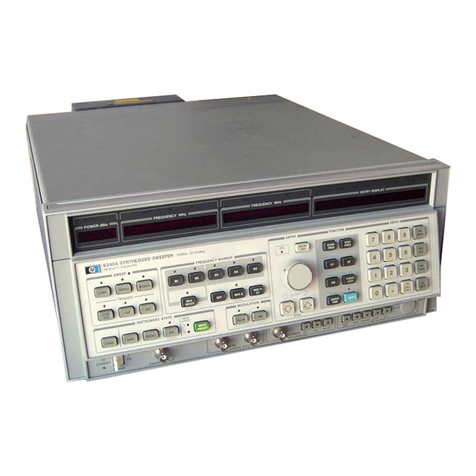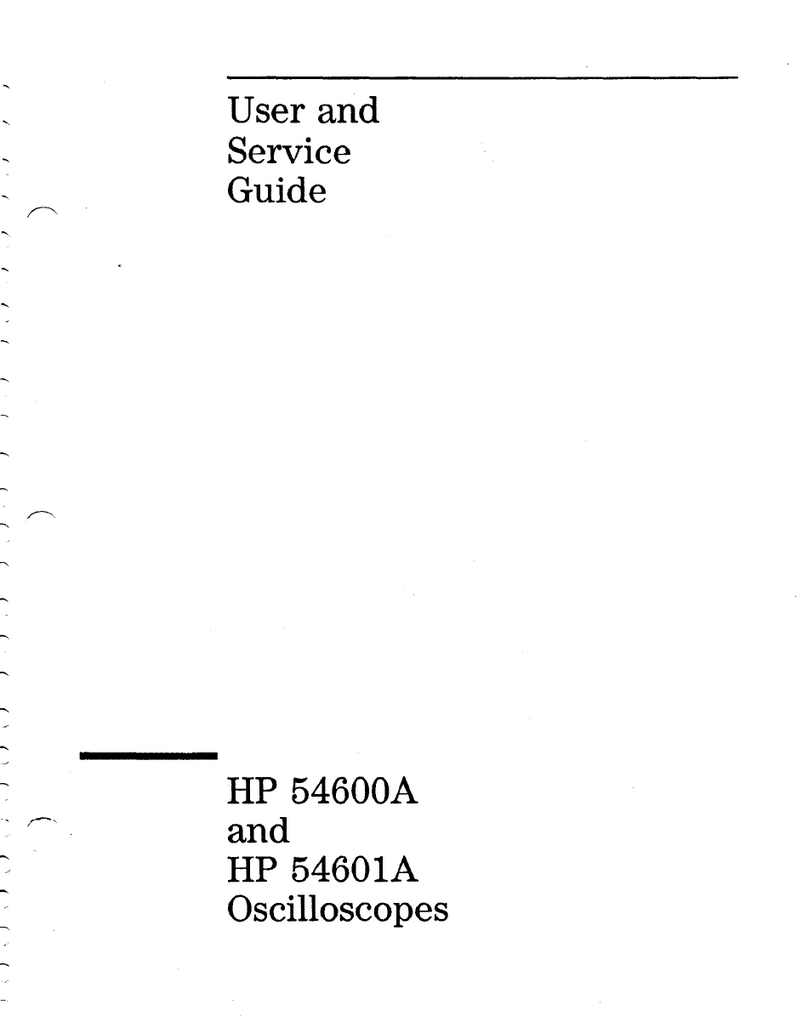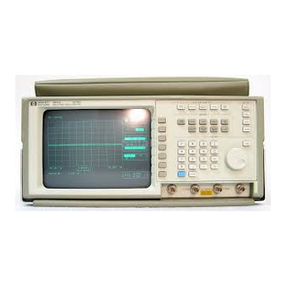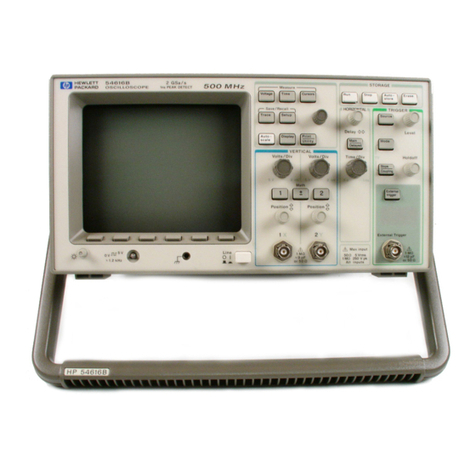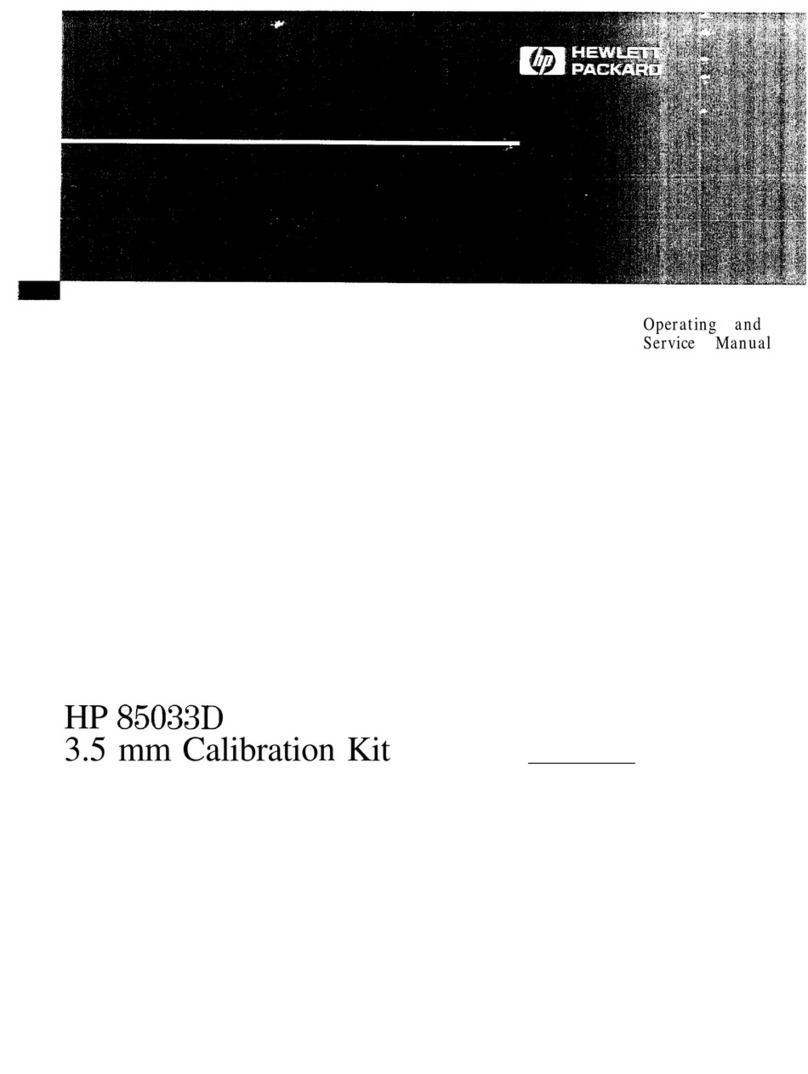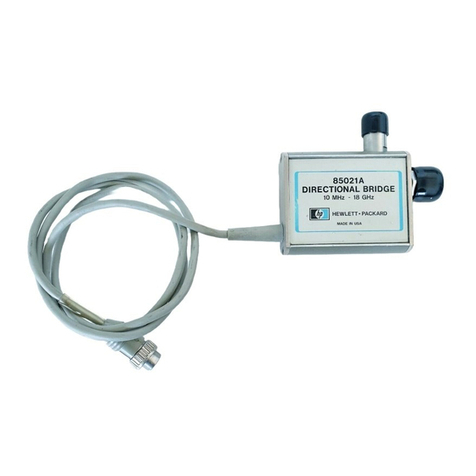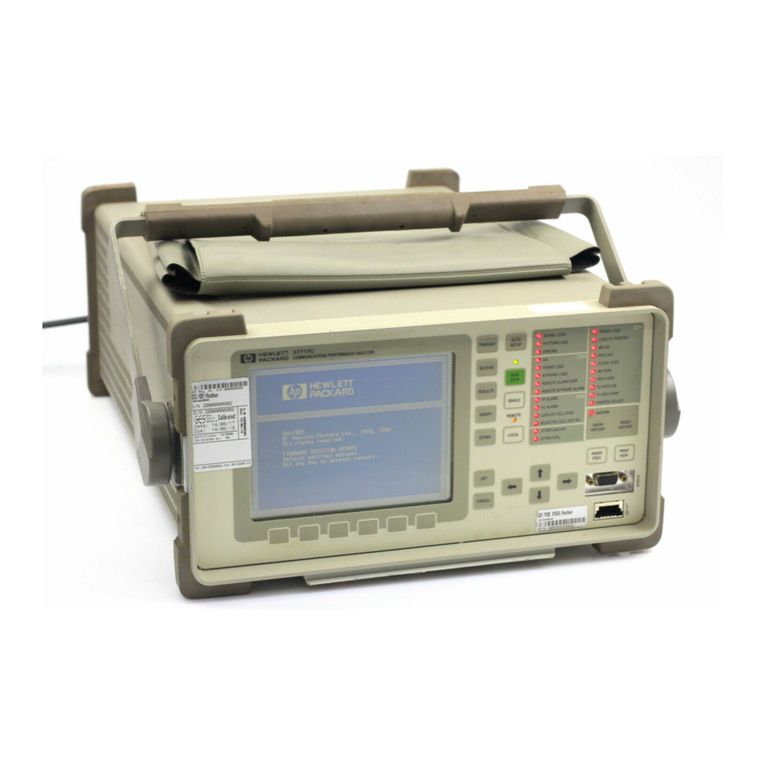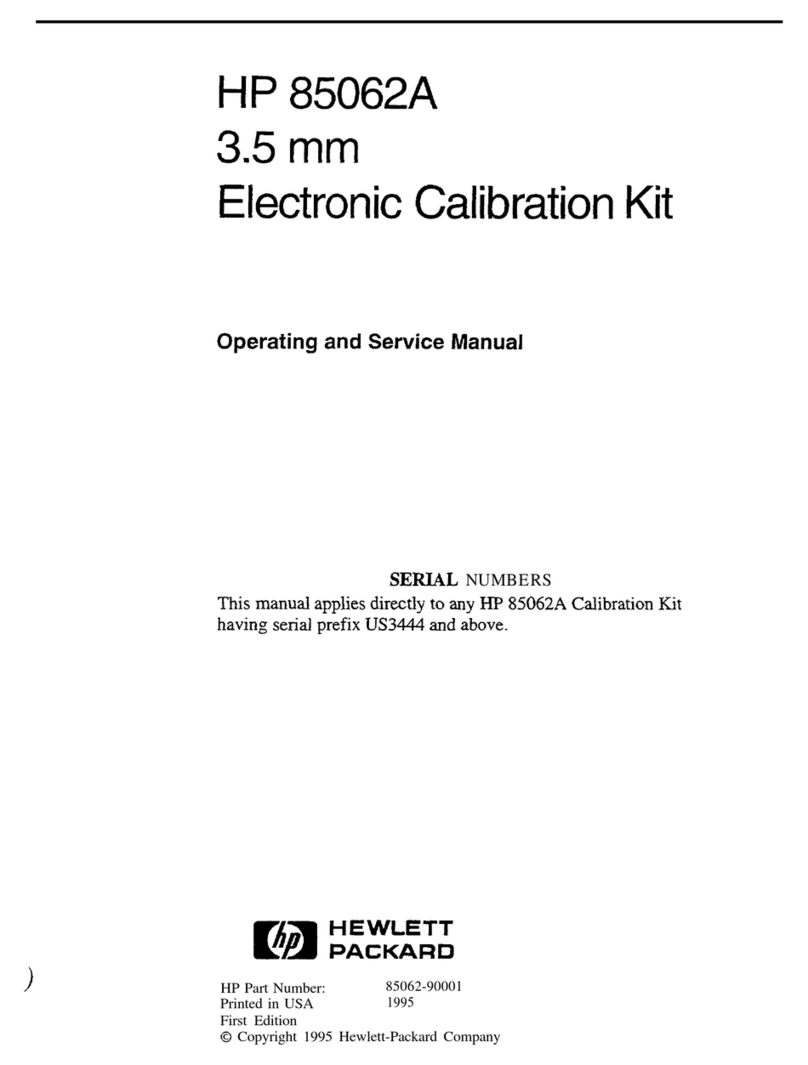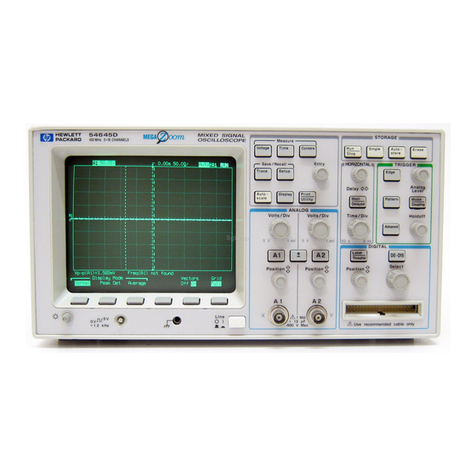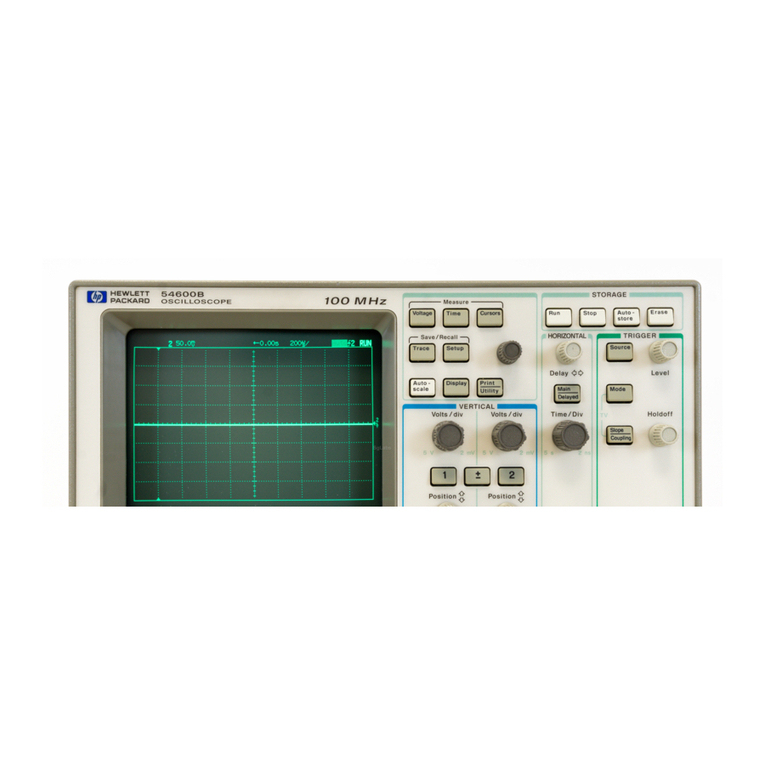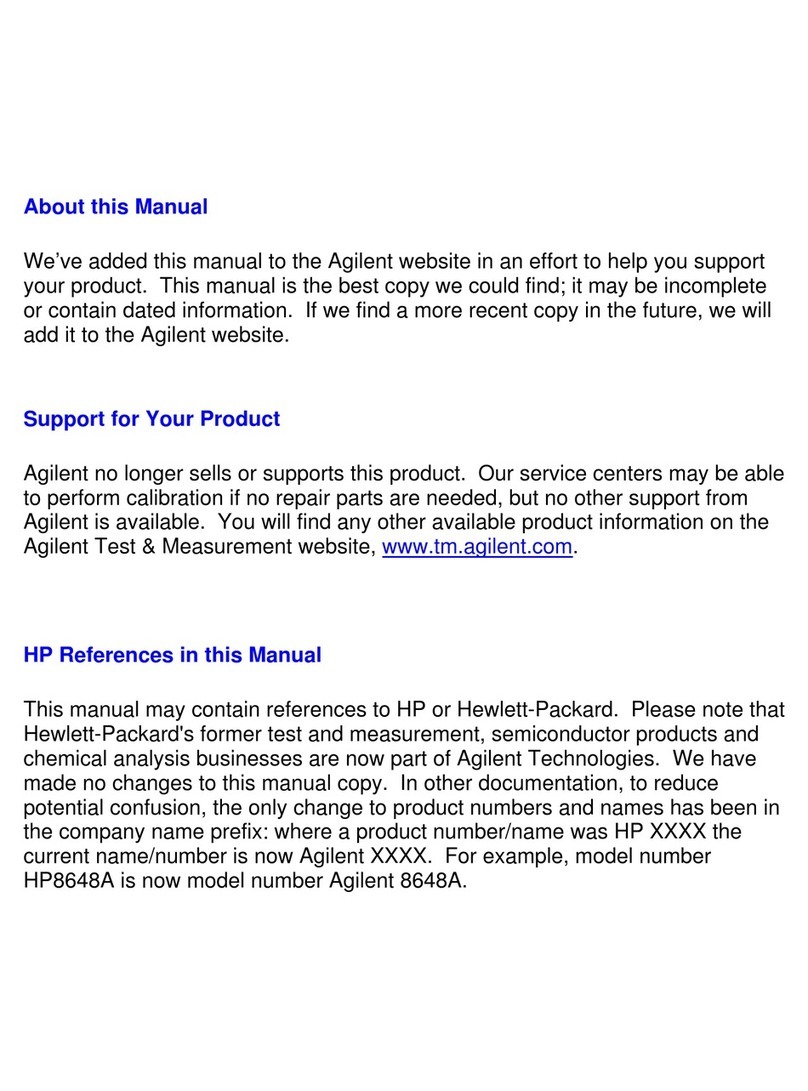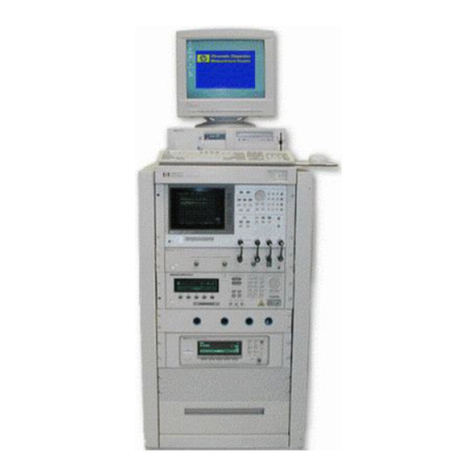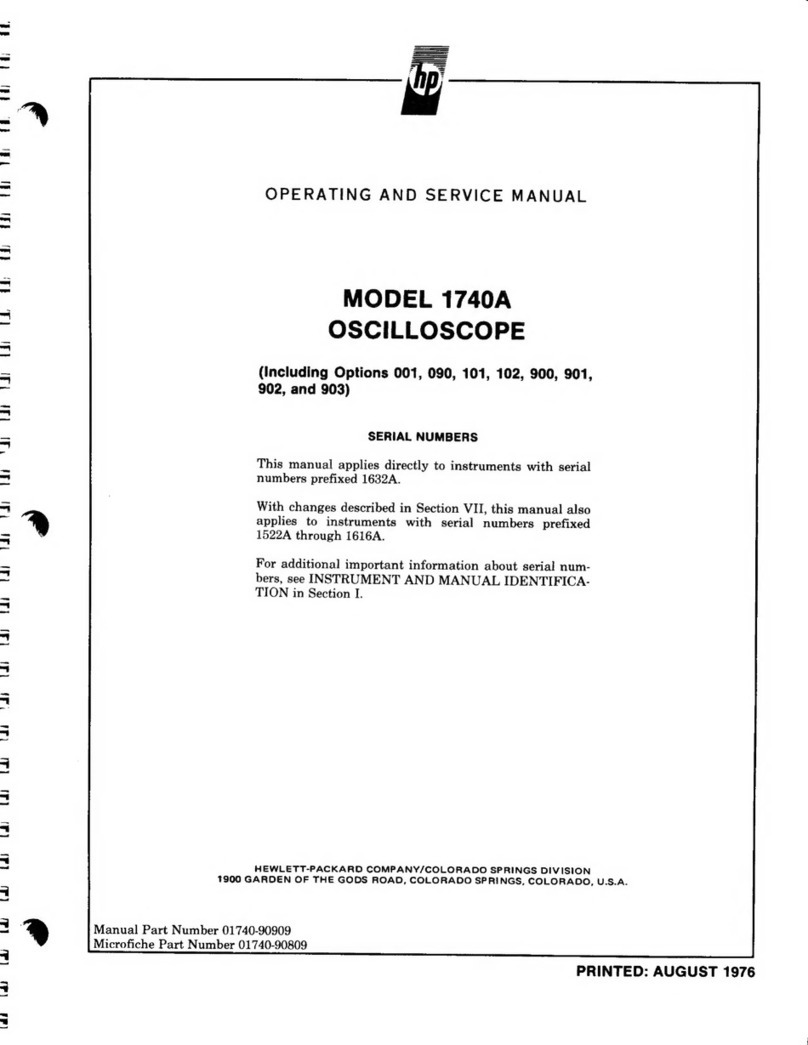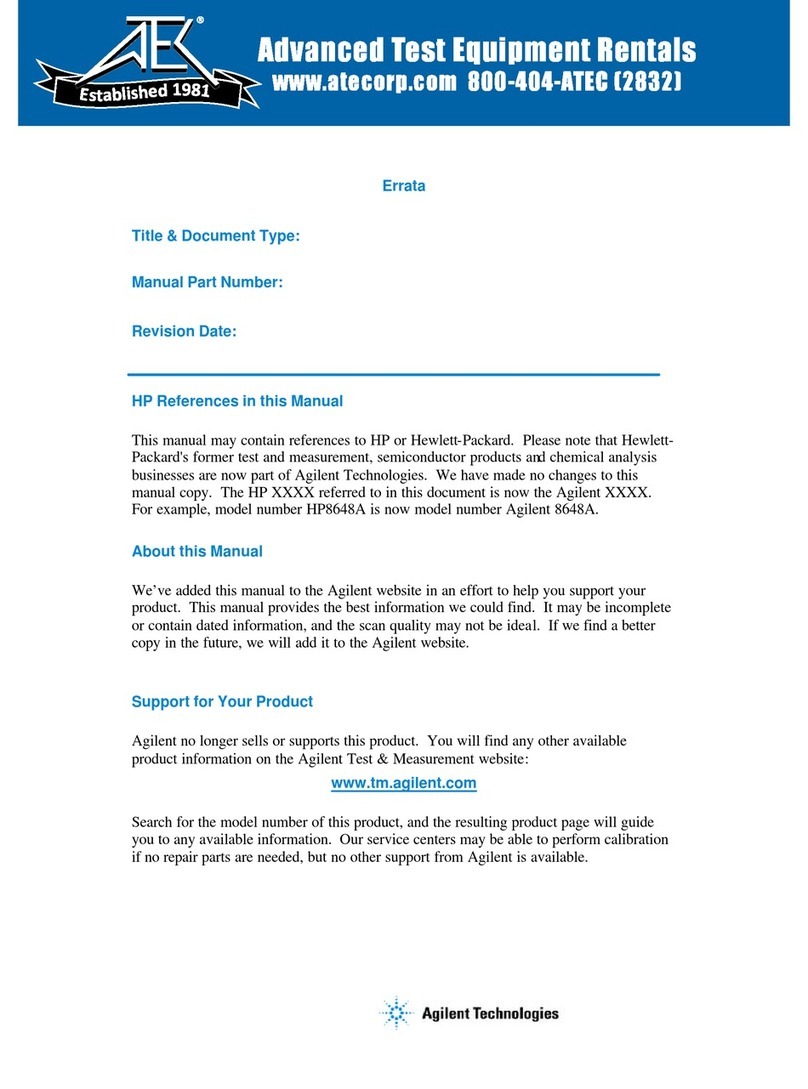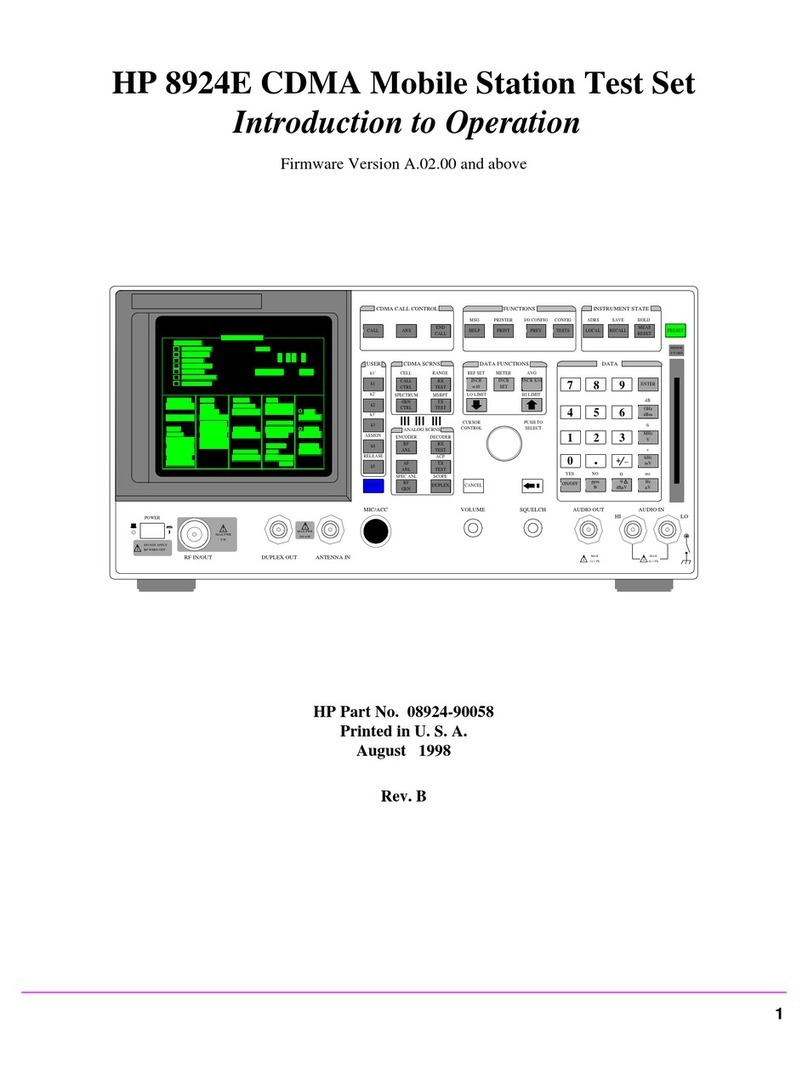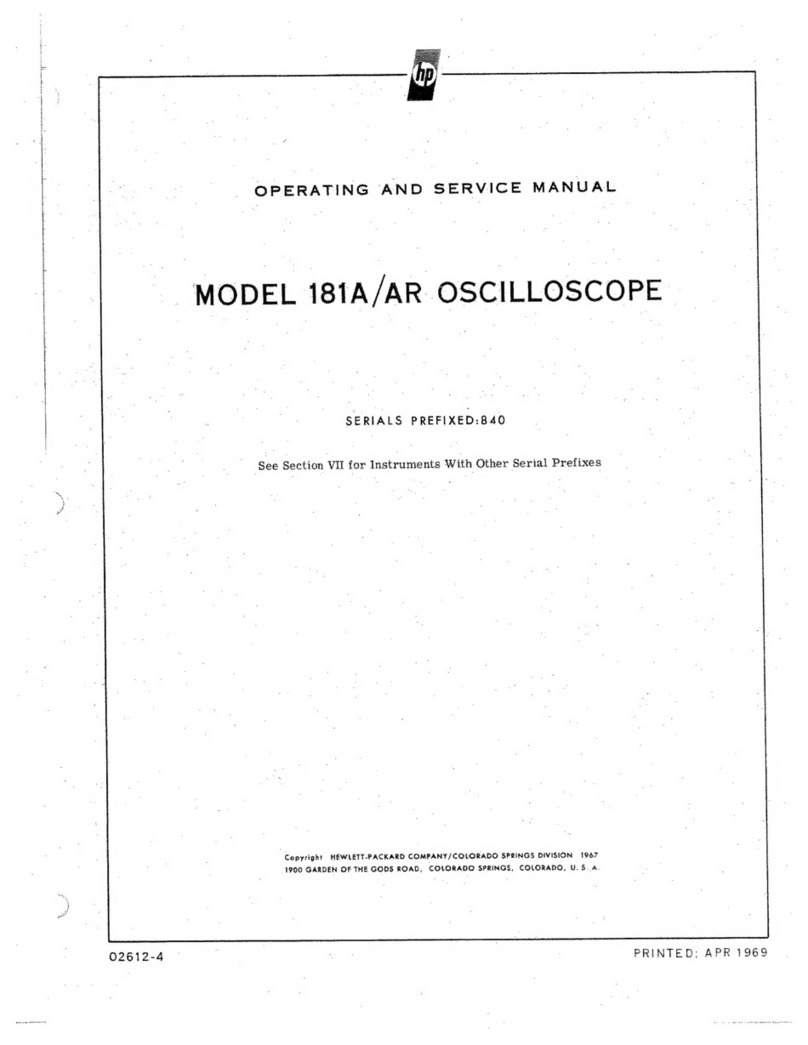
HP 54710A, 54710D, 54720A, and 54720D
Oscilloscopes
The HP 54720 is a modular, high-performance oscilloscope that
contains four data acquisition systems behind each of four plug-in
slots. Each plug-in slot provides 8 bits, 2-GSa/s maximum sample
rate, 16K maximum acquisition memory on the A models and 64K
maximum acquistion memory on the D models, and up to 1.5-GHz
bandwidth (depending on the plug-in you are using). A two-wide
plug-in, like the HP 54721A, uses two slots which allows a maximum
sample rate of 4 GSa/s and a maximum acquisition memory of 32K in
the A models and 128K in the D models. A four-wide plug-in, like the
HP 54722A, uses four slots which allows a maximum sample rate of 8
GSa/s and a maximum acquisition memory of 64K in the 54720A and
256K in the 54720D.
The HP 54720 also has firmware modularity by having a 3-1/2 inch
disk drive and flash ROMs, which allows for upgrades of the system
firmware features in the oscilloscope.
The plug-ins provide analog signal conditioning for the A/D converters
that are inside the mainframe.
This performance and flexibility provide you with the most accurate
analysis of single-shot phenomena found in any laboratory
oscilloscope.
The HP 54710 gives you the same performance as the HP 54720,
except that it has two acquisition systems.
This oscilloscope has many powerful features, and each of them is
described in this book. Your key to unlocking the power of the
oscilloscope depends how you combine its features for your
application, and your knowledge of how each feature effects the
operation of the oscilloscope.
All calibration and repair information is contained in the Service
Guide, and all programming information is contained in the
Programmer’s Reference.
ii












